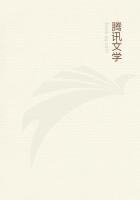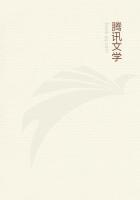The vision of man on the wing did not, of course, begin.with the invention of the balloon.Perhaps the dream of flying man came first to some primitive poet of the Stone Age, as he watched, fearfully, the gyrations of the winged creatures of the air; even as in a later age it came to Langley and Maxim, who studied the wing motions of birds and insects, not in fear but in the light and confidence of advancing science.
Crudely outlined by some ancient Egyptian sculptor, a winged human figure broods upon the tomb of Rameses III.In the Hebrew parable of Genesis winged cherubim guarded the gates of Paradise against the man and woman who had stifled aspiration with sin.
Fairies, witches, and magicians ride the wind in the legends and folklore of all peoples.The Greeks had gods and goddesses many;and one of these Greek art represents as moving earthward on great spreading pinions.Victory came by the air.When Demetrius, King of Macedonia, set up the Winged Victory of Samothrace to commemorate the naval triumph of the Greeks over the ships of Egypt, Greek art poetically foreshadowed the relation of the air service to the fleet in our own day.
Man has always dreamed of flight; but when did men first actually fly? We smile at the story of Daedalus, the Greek architect, and his son, Icarus, who made themselves wings and flew from the realm of their foes; and the tale of Simon, the magician, who pestered the early Christian Church by exhibitions of flight into the air amid smoke and flame in mockery of the ascension.But do the many tales of sorcerers in the Middle Ages, who rose from the ground with their cloaks apparently filled with wind, to awe the rabble, suggest that they had deduced the principle of the aerostat from watching the action of smoke as did the Montgolfiers hundreds of years later? At all events one of these alleged exhibitions about the year 800 inspired the good Bishop Agobard of Lyons to write a book against superstition, in which he proved conclusively that it was impossible for human beings to rise through the air.Later, Roger Bacon and Leonardo da Vinci, each in his turn ruminated in manuscript upon the subject of flight.Bacon, the scientist, put forward a theory of thin copper globes filled with liquid fire, which would soar.Leonardo, artist, studied the wings of birds.The Jesuit Francisco Lana, in 1670, working on Bacon's theory sketched an airship made of four copper balls with a skiff attached; this machine was to soar by means of the lighter-than-air globes and to be navigated aloft by oars and sails.
But while philosophers in their libraries were designing airships on paper and propounding their theories, venturesome men, "crawling, but pestered with the thought of wings," were making pinions of various fabrics and trying them upon the wind.Four years after Lana suggested his airship with balls and oars, Besnier, a French locksmith, made a flying machine of four collapsible planes like book covers suspended on rods.With a rod over each shoulder, and moving the two front planes with his arms and the two back ones by his feet, Besnier gave exhibitions of gliding from a height to the earth.But his machine could not soar.What may be called the first patent on a flying machine was recorded in 1709 when Bartholomeo de Gusmao, a friar, appeared before the King of Portugal to announce that he had invented a flying machine and to request an order prohibiting other men from making anything of the sort.The King decreed pain of death to all infringers; and to assist the enterprising monk in improving his machine, he appointed him first professor of mathematics in the University of Coimbra with a fat stipend.Then the Inquisition stepped in.The inventor's suave reply, to the effect that to show men how to soar to Heaven was an essentially religious act, availed him nothing.He was pronounced a sorcerer, his machine was destroyed, and he was imprisoned till his death.
Many other men fashioned unto themselves wings; but, though some of them might glide earthward, none could rise upon the wind.
While the principle by which the balloon, father of the dirigible, soars and floats could be deduced by men of natural powers of observation and little science from the action of clouds and smoke, the airplane, the Winged Victory of our day, waited upon two things--the scientific analysis of the anatomy of bird wings and the internal combustion engine.
These two things necessary to convert man into a rival of the albatross did not come at once and together.Not the dream of flying but the need for quantity and speed in production to take care of the wants of a modern civilization compelled the invention of the internal combustion engine.Before it appeared in the realm of mechanics, experimenters were applying in the construction of flying models the knowledge supplied by Cayley in 1796, who made an instrument of whalebone, corks, and feathers, which by the action of two screws of quill feathers, rotating in opposite directions, would rise to the ceiling; and the full revelation of the structure and action of bird wings set forth by Pettigrew in 1867.
"The wing, both when at rest and when in motion," Pettigrew declared, "may not inaptly be compared to the blade of an ordinary screw propeller as employed in navigation.Thus the general outline of the wing corresponds closely with the outline of the propeller, and the track described by the wing in space ISTWISTED UPON ITSELF propeller fashion." Numerous attempts to apply the newly discovered principles to artificial birds failed, yet came so close to success that they fed instead of killing the hope that a solution of the problem would one day ere long be reached.
"Nature has solved it, and why not man?"
From his boyhood days Samuel Pierpont Langley, so he tells us, had asked himself that question, which he was later to answer.















